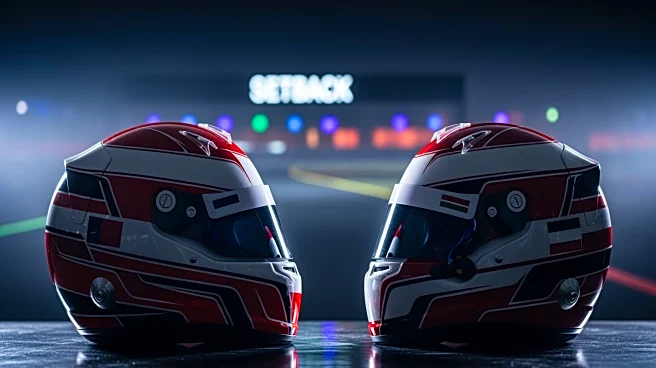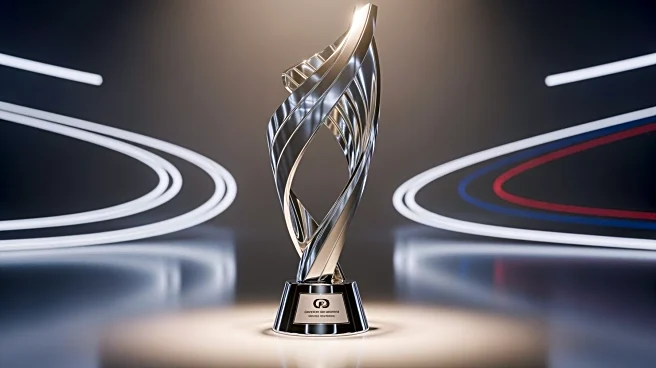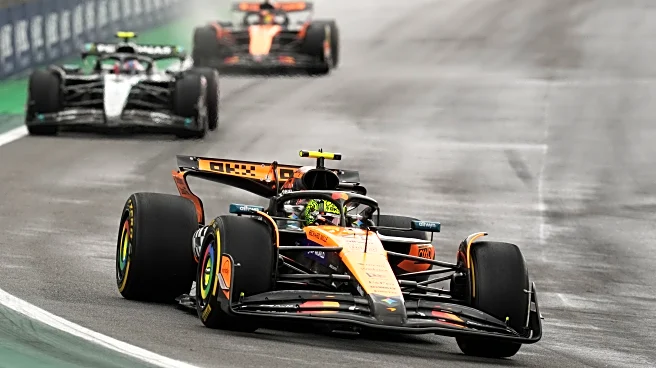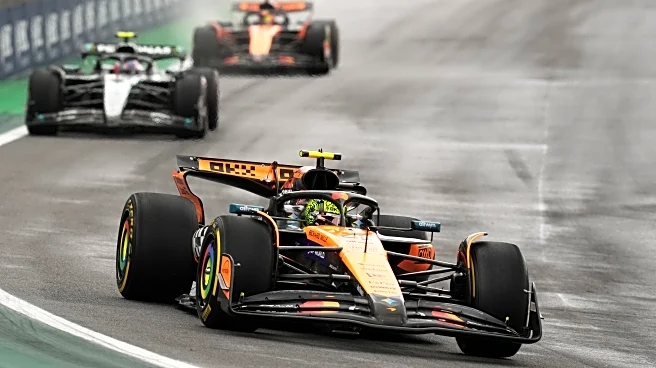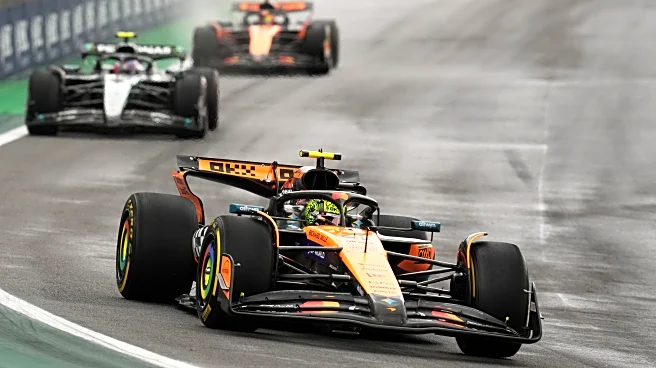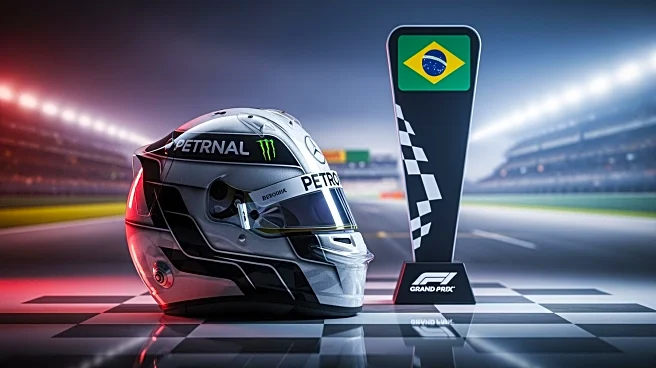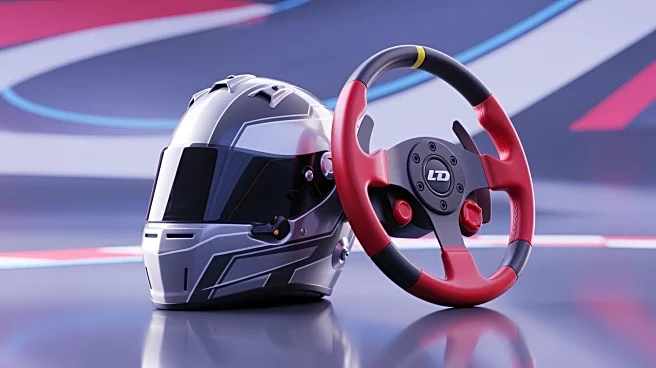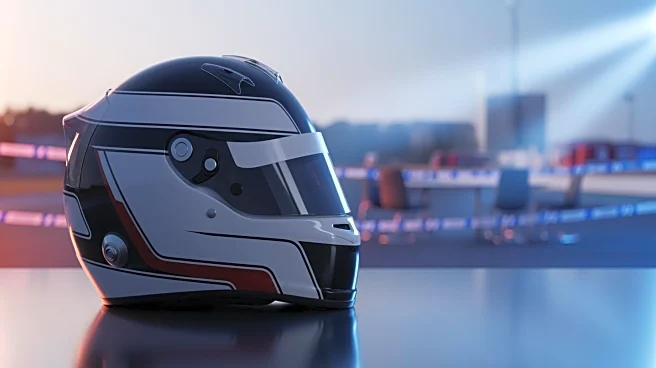What's Happening?
Red Bull Racing team principal Laurent Mekies explained the strategic decision to bring Max Verstappen in for an additional pit stop during the Brazilian Grand Prix. At the time, Verstappen was leading
the race with a 6.5-second advantage over McLaren's Lando Norris. Mekies stated that the decision was made because Verstappen had no realistic chance of maintaining the lead due to tire degradation. The pit stop was intended to give Verstappen a strong chance at securing a podium finish. Ultimately, Verstappen finished third, with Norris winning the race and Mercedes driver Andrea Kimi Antonelli taking second place. Verstappen is currently third in the Drivers' Championship standings, trailing Norris by 49 points.
Why It's Important?
The decision by Red Bull Racing highlights the critical role of strategic pit stops in Formula 1, where tire management can significantly impact race outcomes. Verstappen's third-place finish affects his standing in the Drivers' Championship, where he remains 49 points behind leader Lando Norris. This development is crucial for Red Bull Racing as they navigate the final races of the season, aiming to maximize their points and improve their championship position. The outcome also underscores McLaren's competitive edge this season, with Norris maintaining his lead in the championship.
What's Next?
With three races remaining in the 2025 Formula 1 season, Red Bull Racing will need to carefully strategize to optimize Verstappen's performance and potentially close the gap in the championship standings. The team will likely focus on tire management and race strategy to enhance their chances in upcoming races. Meanwhile, McLaren and Mercedes will continue to push for strong finishes to secure their positions in the championship.
Beyond the Headlines
The pit stop decision reflects broader strategic considerations in Formula 1, where teams must balance immediate race outcomes with long-term championship goals. The emphasis on tire management and strategic calls can influence team dynamics and driver morale, impacting performance in future races. This scenario also highlights the competitive nature of Formula 1, where split-second decisions can alter the course of a race and the championship.


